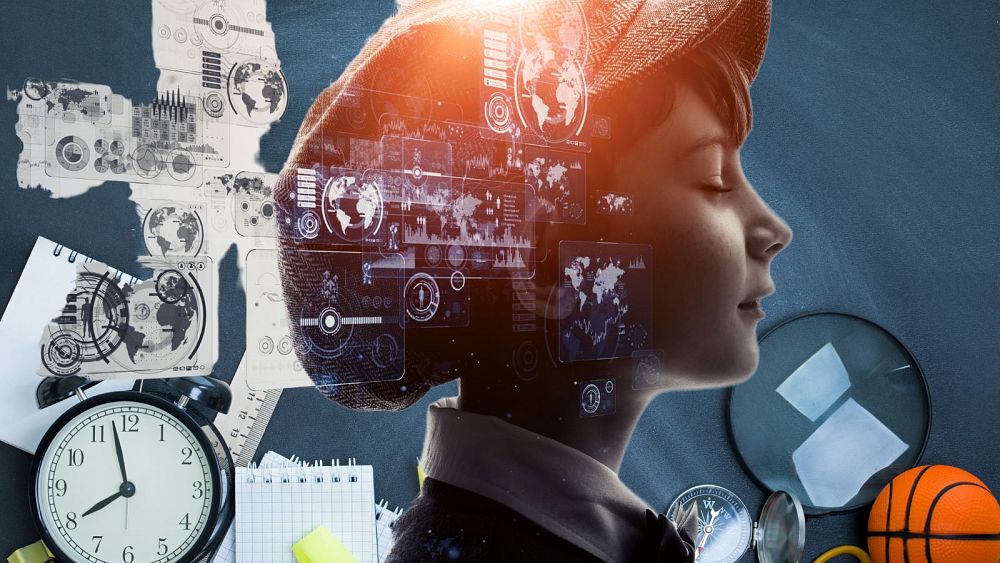
Is the end of homework near? As new powerful artificial intelligence (AI) tools like ChatGPT take the Internet by storm, teachers concerned with AI-driven cheating are questioning their teaching and assessment methods.
ChatGPT, the most powerful AI language model ever developed by the company OpenAI, is capable of generating natural-sounding text on demand, including in a specific style or in several languages, in just a few seconds.
The quality of the copy it produces is sufficient to impress teachers in secondary and higher education, and even researchers.
«Young or not, we are all amazed at how quickly and relevantly it responds,» Cécile Cathelin, a teacher at a high school in the French city of Tours, told Euronews Next.
The use of AI tools in copywriting has sparked an outcry around the world. In the United States, public schools in New York and Seattle have decided to block ChatGPT from their devices and WiFi networks.
In France, the prestigious Sciences Po university in Paris has also just announced a strict ban on its use. Cathelin says 80 to 90 per cent of her colleagues oppose these AI text generators, which they perceive as a cheating aid.
But experts question whether bans like these are really effective. On the one hand, students will always be able to access tools like ChatGPT through other means than school devices. On the other hand, some question the relevance of blocking access to a digital tool whose use is likely to grow in the professional world in the coming years.
«In a few years’ time, students will be confronted with people who have had the right to use it, who have learned to do so and who have learned to what extent they can trust the tool or not,» said Amélie Cordier, a lecturer in artificial intelligence (AI) at Lyon I University.
Alain Goudey, Associate Dean for Digital at the NEOMA Business School, echoes that sentiment.
Alain Goudey
Associate Dean for Digital, NEOMA Business School
Beyond using or not using ChatGPT, he says the key challenge is to understand how these tools work and what their limits are — and to explain these to students, as it’s not because a text reads well that it’s accurate.
The machine algorithms behind ChatGPT have been trained “on a version of the world that boils down to the documents and web pages that the developers have given to the model,” Cordier explained. “And the notion of verifiable fact is very tenuous».
A text can therefore contain erroneous quotes and false information. OpenAI has yet to make public the data that was used to train the ChatGPT model.
ChatGPT, an opportunity to learn differently?
Goudey is now considering different scenarios for teachers to adjust to the reality of AI tools. One of them is to adapt assessment methods by setting up more in-class exams or oral presentations.
“If ChatGPT passes an exam, we need to change the exam,» he told Euronews Next.
He drew a comparison with calculators, which did not end the teaching of mathematics and whose use is restricted by teachers’ instructions.
That same analogy was used by OpenAI’s CEO Sam Altman in a recent interview with StrictlyVC. “I imagine this is a more extreme version of that, no doubt, but also the benefits of it are more extreme,” he argued.
Sam Altman
CEO, OpenAI
While teachers were “understandably nervous” about ChatGPT’s impact homework, “we also hear a lot from teachers who are like, wow, this is like an unbelievable personal tutor for each kid,” Altman said.
“Before Google came along, there was a bunch of things that we learned,” he added. “Memorising facts was really important and that changed. And now I think learning will change again, and we’ll probably adapt faster than we think”.
Working with ChatGPT, not against
Cathelin, who teaches French in secondary school, decided to integrate ChatGPT into her lessons in January. ChatGPT provides a first draft on a given assignment, which the students then have to enrich with their personal knowledge, in small groups.
She says ChatGPT also presents an opportunity to learn in a different way for children whose mother tongue is not French, or who have a disability.
For example, it can also produce a text with different language levels. It also has the advantage of generating recurrent syntactic structures. In fact, this is one of the distinguishing features that could help identify text generated by ChatGPT.
Cathelin started using ChatGPT in her personal time and subsequently «self-trained» to include it in her lessons.
She says an «educational pact» discussed with her students on how to work with these tools allows her to use them in class in a constructive way and in a trusting environment.
But Cathelin is a technology enthusiast. She admits it will be critical to find the time to train teachers, many of whom may be more reluctant, on these new and rapidly evolving AI tools.
«The digital transformation has not slowed down. In fact, it’s accelerating and it’s urgent to tackle these challenges and find appropriate ways to adapt our practices,» Goudey said.
OpenAI has already announced an even more advanced version of its algorithm, ChatGPT 4, but without giving a release date.
Cathelin and Cordier both note that students haven’t waited for ChatGPT to try to escape the chore of homework — whether by photocopying the library encyclopaedia, copy-pasting content from Wikipedia or enlisting their parents’ help.
«What is ultimately very important in the learning process is not so much the subject on which you learn, it’s the methodology that you learn to develop around that subject,» Cordier said.

